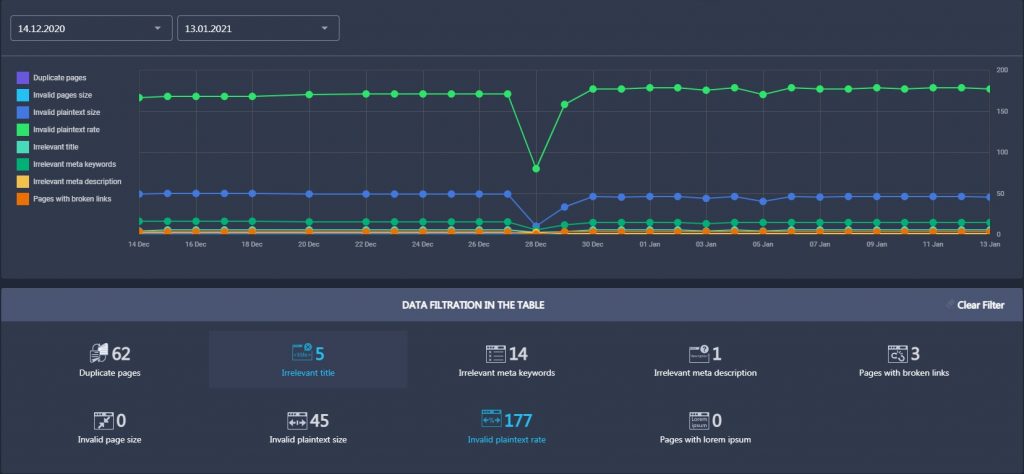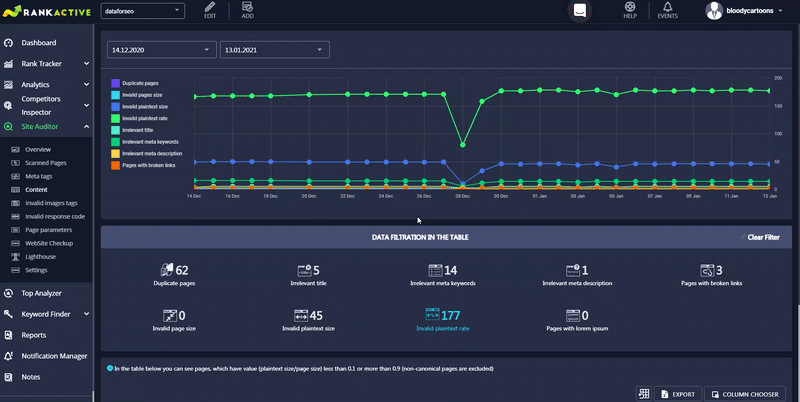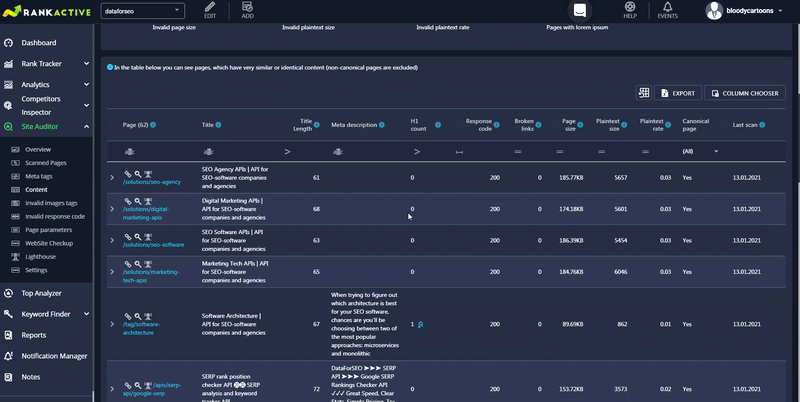In the Content section, you can discover several content issues on your website. It is divided into three parts: the graph, data filtration in the table, and the table itself.
The graph displays how many pages with several content issues you had on each day of the specified timeframe. It shows the number of pages with duplicates, invalid page sizes, invalid plaintext sizes, invalid plaintext rates, irrelevant titles, irrelevant meta keywords, irrelevant meta descriptions, and broken links. You can exclude any of these parameters from the graph by clicking on corresponding icons.
In the Data Filtration In The Table section, you can choose what content issues to display in the table below.
- Click on Duplicate pages to display website pages with identical or very similar content.
- Click on Irrelevant title to display pages with titles irrelevant to their content. The irrelevant title issue occurs when less than 30% of words from a title are present on a page.
- Click on Irrelevant meta keywords to display website pages with meta keywords irrelevant to their content. The irrelevant meta keywords issue happens when less than 60% of words from meta keywords are present on a page.
- Click on Irrelevant meta description to display website pages with descriptions irrelevant to their content. The irrelevant meta description issue occurs when less than 20% of words from meta description are present on a page.
- Click on Pages with broken links to display website pages that have one or more broken links placed on them.
- Click on Invalid page size to display website pages with page size less than 1024 bytes or more than 256 kbytes.
- Click on Invalid plaintext size to display website pages that have plaintext size less than 1024 bytes or more than 256 kbytes.
- Click on Invalid plaintext rate to display website pages that have value (plaintext size/page size) less than 0.1 or more than 0.9.
- Click on Pages with lorem ipsum to display website pages that have lorem ipsum. Lorem ipsum is filler text that shares some characteristics of a real written text but is random or otherwise generated. It is usually used as a replacement text when the real one is not available.
Along with page URLs, the table will also provide additional data about each page. The data that will be displayed in columns depends on the chosen filter in the Data Filtration In The Table section.

If some of the parameters you need isn’t in the table, you can pull them out from Column Chooser.
After that, you can export the data from the table by clicking on the Export button.


